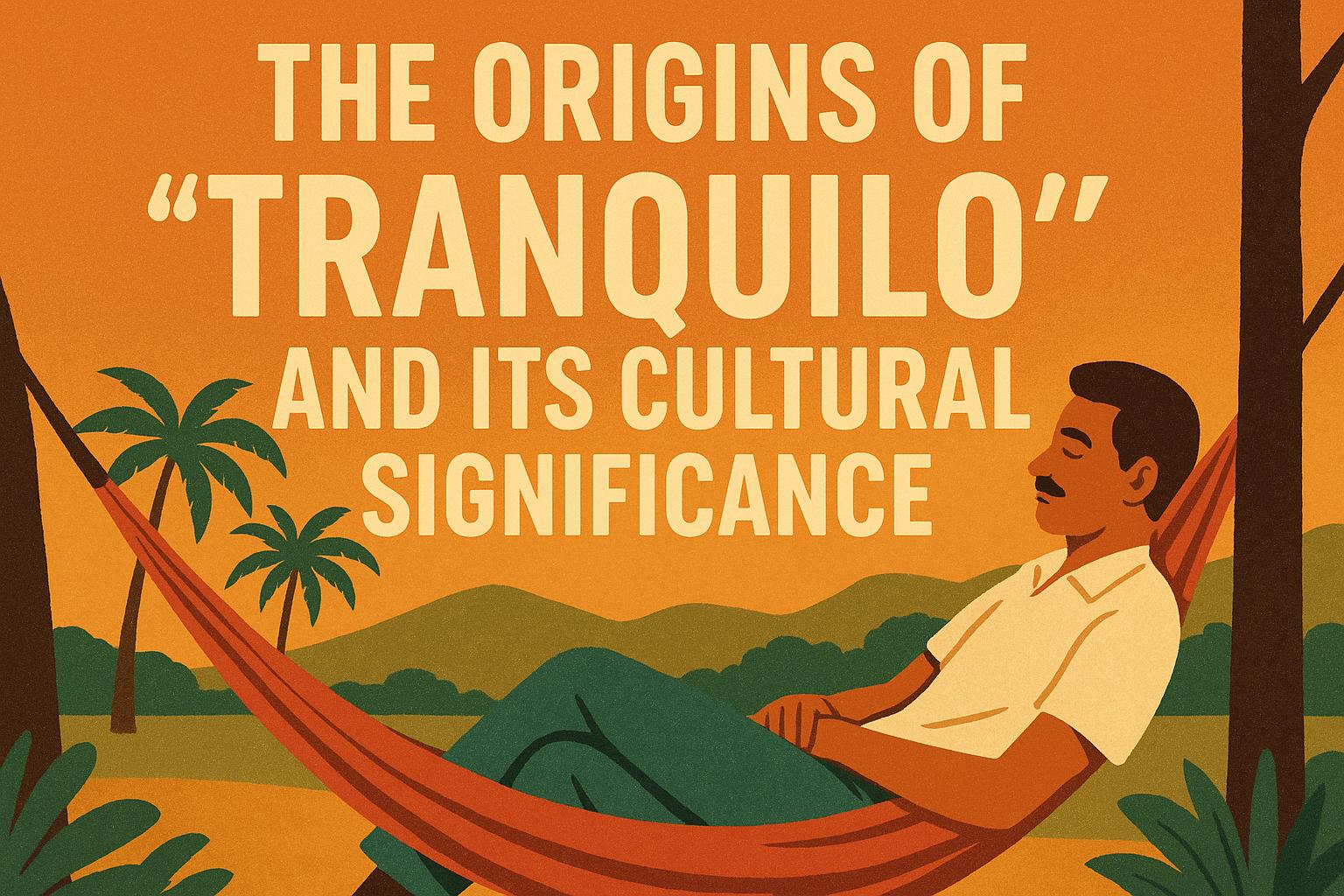The Etymology of “Tranquilo”
The evolution of language is a fascinating journey that reflects the intricate interplay between culture, history, and thought. The word “tranquilo” provides a captivating example of this, tracing its origins back to the Latin term “tranquillus.” This original word conveyed a sense of calmness or quietude, encapsulating a state of peace that transcends the literal and permeates through various facets of life. Over the centuries, as Latin evolved and branched into distinct Romance languages, “tranquillus” transformed. In English, it became “tranquil,” while in Spanish and Portuguese, it emerged as “tranquilo.” Though these variations are tailored to their respective languages, they all carry the fundamental meaning of a peaceful state.
“Tranquilo” has etched its place firmly in the lexicon of Spanish-speaking regions, often surfacing in everyday dialogues. Whether used to suggest taking a moment to relax or advising patience in the face of adversity, “tranquilo” embodies the essence of calmness. Its prevalent usage is a testament to its adaptability and relevance to daily interactions, reflecting a cultural inclination towards moderation and peaceable interactions. By fostering an atmosphere of relaxation, “tranquilo” invites individuals to embrace stillness amidst life’s turbulent pace.
Cultural Interpretations
Language not only communicates meaning but also encapsulates cultural paradigms. Within the diverse array of Latin American and Iberian societies, “tranquilo” assumes a role that extends beyond mere vocabulary. It is emblematic of cultural archetypes that prize a tranquil approach to life as paramount. This philosophical outlook resonates profoundly where communal bonds are the societal cornerstone, emphasizing relationships, social cohesion, and familial ties.
In regions such as Brazil, the expression “tranquilo” has woven itself into the very fabric of daily vernacular. Commonly utilized in conversational exchanges, it suggests a mindset of being unperturbed. This aligns seamlessly with Brazil’s cultural ethos, which elevates personal contentment and social joy over the stresses of a hectic lifestyle. By encapsulating this mindset, “tranquilo” acts as both linguistic tool and cultural mirror, revealing the underlying values that guide societal behaviors.
The Role of “Tranquilo” in Language
Language is not static; it is dynamic, influencing and being influenced in return. In this light, “tranquilo” transcends being a mere word, serving multifaceted purposes within social discourse:
Encouraging Calmness: “Tranquilo” frequently operates as a verbal balm, utilized to diffuse tense situations by encouraging an individual to remain composed. In settings that brim with pressure, hearing a resonant “tranquilo” can function as a grounding reminder to embrace inner peace.
Politeness and Patience: In conversations, the directive to be “tranquilo” often conveys more than an instruction for calmness. It subtly encodes a message of patience and courtesy, signaling an absence of urgency and respect for another’s time and effort. Through mutual understanding, it fosters a conversational atmosphere steeped in respect and consideration.
Cultural Greeting: In certain locales, “tranquilo” also assumes the role of a casual greeting or parting phrase. This usage highlights the amiable and laid-back relations cherished within specific communities, promoting congeniality in interactions and affirming social bonds.
Tranquilo in Music and Media
The arts, encompassing music, cinema, and television, frequently reflect prevailing cultural narratives. Here, the word “tranquilo” emerges not just as an expression but as a symbol within artistic dialogues. Within song titles and lyrics, “tranquilo” is employed to evoke themes of serenity, relaxation, and peace. Artists harness its cultural resonance to remind audiences of the virtues of tranquility, using music as a vessel for stress relief and emotional catharsis.
Similarly, film and television characters often embody or seek to achieve a state of “trankility,” portraying narratives that juxtapose the rush of modern life against the allure of a more unhurried existence. Such portrayals invite audiences to contemplate the balance between productivity and peace, creating a dialogue that extends beyond entertainment and into philosophical contemplation.
Global Recognition and Influence
“Tranquilo” is not confined to its cultural and linguistic origins; it resonates globally, echoing a universal quest for equilibrium amidst life’s unpredictability. The universality of its core meaning transcends language barriers, influencing individuals even outside of Spanish-speaking territories.
In recent years, global interest in practices like yoga, meditation, and mindfulness has grown, mirroring the intent encapsulated in “tranquilo.” These practices advocate for a centered existence, parallel to the essence of the term. As “tranquilo” becomes integrated into a broader context, it helps to forge a connection between cultural philosophies and contemporary wellness practices, underscoring a shared human aspiration for peace across cultural divides.
Conclusion
Upon deeper examination, “tranquilo” reveals itself to be more than a linguistic element; it carries cultural significance and philosophical implications. It extends an invitation to life’s more tranquil side, advocating for choices anchored in serenity and balance. With global movements increasingly favoring mental health awareness and the prioritization of well-being, the principle embodied by “tranquilo” prompts valuable reflections.
In pursuing a harmonious existence, integrating the ethos of “tranquilo” can illuminate pathways to achieving inner peace and balance. Through acknowledging and embracing the simplicity it champions, one might find guidance toward a more fulfilling and harmonious life, bridging cultural and linguistic gaps in the process.
This article was last updated on: October 17, 2025
